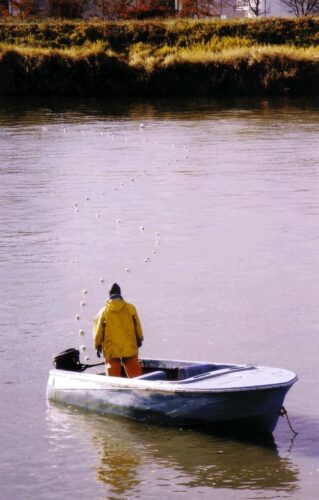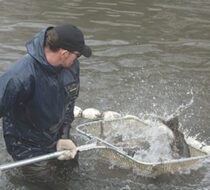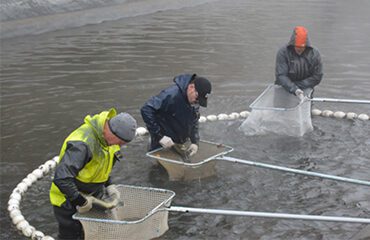
Fisheries
Puyallup Tribal Fisheries Mission Statement

Puyallup Tribal fisherman during chum season on the Puyallup River. Photo courtesy of Emmett O’Connell, NWIFC.
As directed by the Puyallup Tribe of Indians the Puyallup Tribal Fisheries Department shall, “preserve, protect and enhance salmon in usual and accustomed areas, and the water resources that determine their viability.” It’s the department’s goal to fulfill its obligations by leading and participating in habitat restoration efforts, harvest management/policy, fish enhancement projects and research and monitoring activities.
Between the signing of the Medicine Creek Treaty in 1854 and the Boldt Decision in 1974 there was no legal standing for the Puyallup Tribe of Indians to maintain their inherent rights of fishing. As a result of the Boldt decision, the tribe was allocated 50% of harvest and management responsibility for salmon runs on their usual and accustoms fishing areas. Shortly after the mandate, the Puyallup Tribal Fisheries Department began a small office and hatchery. During this time a small number of individuals made great efforts to establish salmon enhancement projects that benefited both tribal and non-tribal fisherman alike.
The Fisheries Department continues to grow and maintains a large presence in the Puyallup River watershed. The department leads efforts to preserve and restore salmon habitat throughout a watershed that is showing many symptoms associated with logging, urbanization, and a rapidly expanding human population. In addition, the tribe continues to identify enhancement opportunities and create restoration projects, while participating in research related to salmon recovery efforts.

The department closely monitors the status of salmon populations both within and outside its jurisdiction and strives to maintain healthy, harvestable salmon populations for the benefit of all. We continue to refine management practices and participate in decision making processes that protect the resource, while maintaining the Tribe’s cultural and economic identity. The Puyallup Fisheries Department, under the direction of the Puyallup Tribe of Indians, has and will continue to participate and lead efforts in preserving the natural resources that define this unique portion of Puget Sound.






